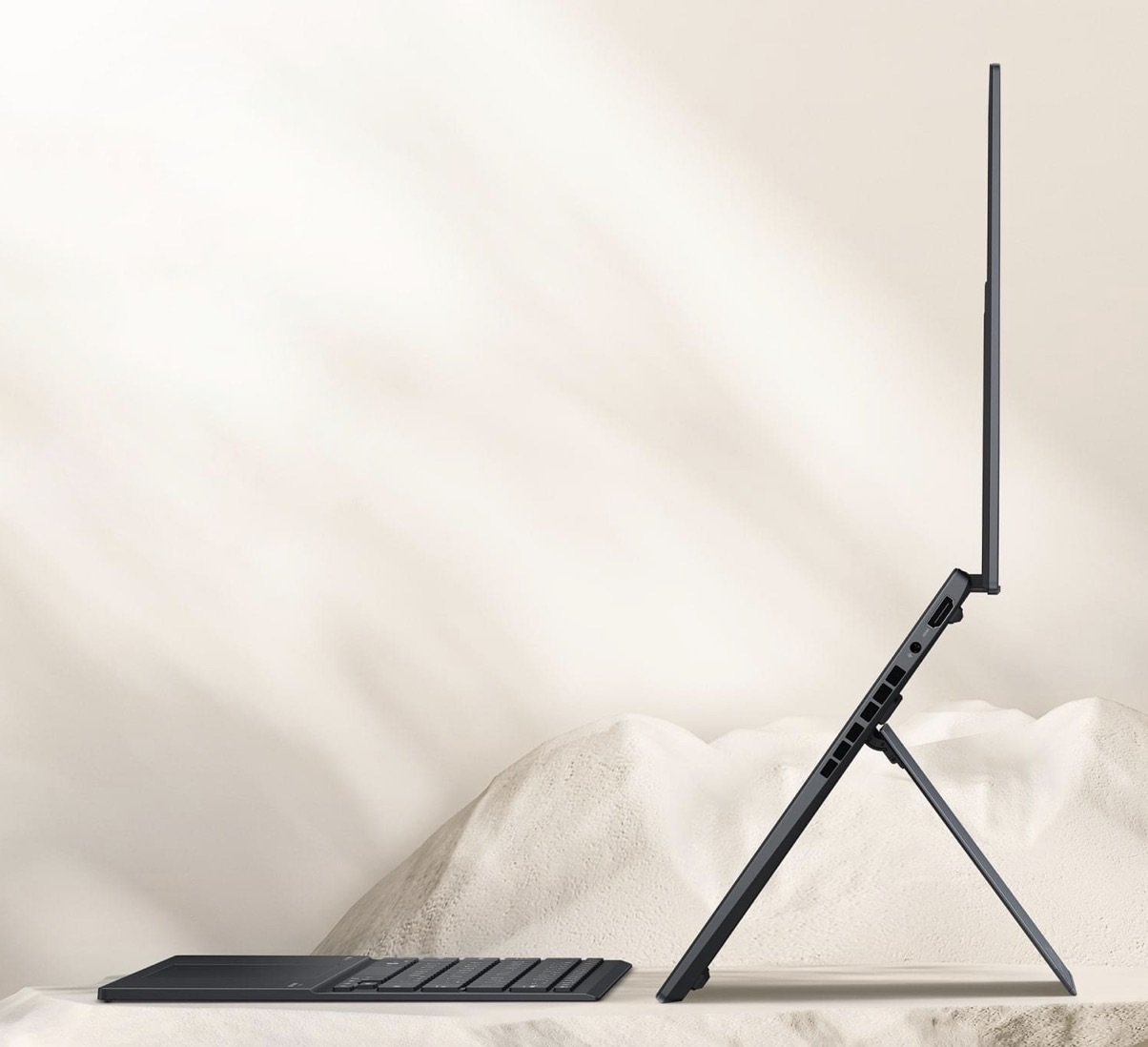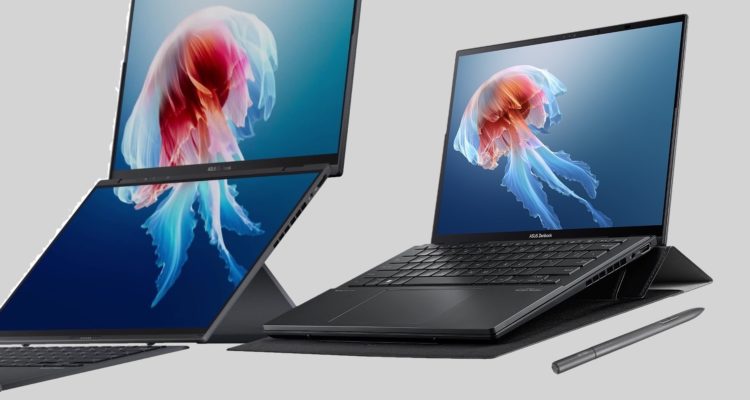This week at CES, ASUS unveiled the Zenbook DUO, an absolutely insane entry into the laptop market that boasts two 14″ OLED screens, a standard keyboard that detaches from the machine, and the ability to roll everything into a single, sleek, normal-looking laptop package.
And it’s a real product. That you can buy. At a reasonable price!
This is not a sponsored post at all, but it will indeed have us gushing about this computer because we had the opportunity to go hands on with it before its unveiling, and it really is a sight to behold.
Not including the keyboard, the laptop is in the under 3-pound category of devices. This is not a giant workstation that folds out like an origami crane. The device looks and, for the most part, operates like a traditional laptop. Until you take off the keyboard and reveal a duplicate screen.
The screens themselves are also wickedly impressive, offering up to 3K 120Hz OLED models (there’s also a model with a pair of 2K 120Hz OLED displays), for nearly 20″ of that sweet OLED goodness when the device is splayed out in all its glory.
The 180-degree hinge means you can open the display in a number of different configurations, including flat in “sharing” mode with each display pointing in opposite directions, or propped up with one display on top of the other, thanks to the integrated kickstand. There’s no Yoga Book inverse 360-degree hinge here, but ASUS says that is to keep the hinge relatively simple, more reliable, and keep to the majority of use cases for its users.

Nothing custom or fancy needs to happen under the hood to make any of the screen magic happen, either. Windows recognizes the second screen as an external monitor, so everything is built-in and ready to go. No chance that the drivers need updating or Windows breaking compatibility with some custom superset of ASUS drivers that didn’t get updated in time.
Many times with unique device form factors, especially in their infancy, we see budget processors and video cards, limited performance, and otherwise maybe just enough power for the computer to be a daily productivity driver, but not much else.
With the Zenbook DUO, users can configure up to an Intel Core Ultra 9 processor (the ones announced last month that all feature integrated silicon for AI workloads), 32 GB of LPDDR5x memory, and up to a 1 TB SSD. All this alongside a very serviceable 75 Wh battery which should get you between eight and 10 hours of use with both screens, or a few hours longer with only one.
And you need to hear stuff, so there’s also a Harman Kardon-certified Dolby Atmos audio system built-in.
 The Zenbook DUO keyboard is probably one of the most unique aspects of the device, measuring in at just a few millimetres thick, with integrated Bluetooth and battery so that it detaches and instantly pairs with the device. To charge it, just snap it onto the bottom screen and the integrated pogo pins turns it into a wired keyboard with virtually zero latency.
The Zenbook DUO keyboard is probably one of the most unique aspects of the device, measuring in at just a few millimetres thick, with integrated Bluetooth and battery so that it detaches and instantly pairs with the device. To charge it, just snap it onto the bottom screen and the integrated pogo pins turns it into a wired keyboard with virtually zero latency.
Oh, and don’t fuss with aligning it, because magnets.
While many devices unveiled at CES are pipe dreams (and others never see the actual production line), you can get your hands on the 2K variant of the Zenbook DUO with an Intel Core Ultra 7, 1TB SSD, and 16GB of RAM for $2,199 CAD in about a month when it launches in February.
The higher-end 3K model will launch with the Intel Core Ultra 9 and 32GB of RAM later this year in 2024 for just a few hundred more, at $2,499 CAD.

